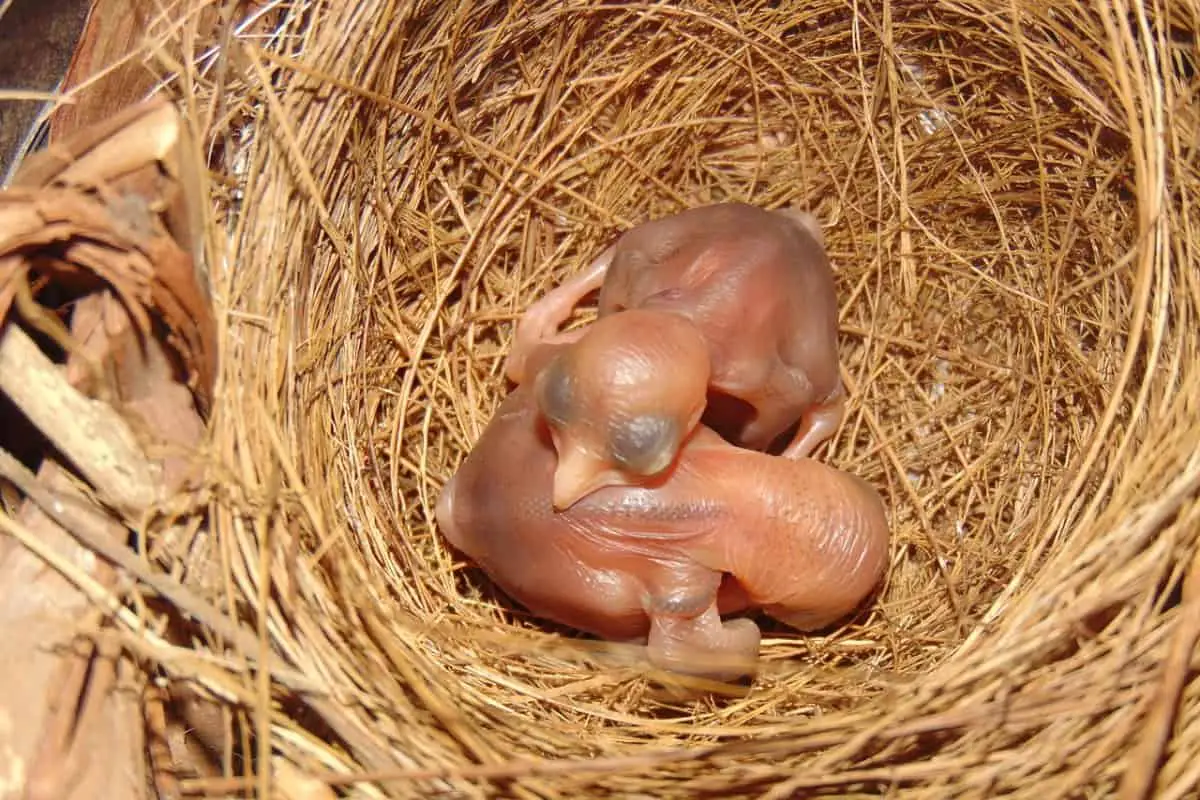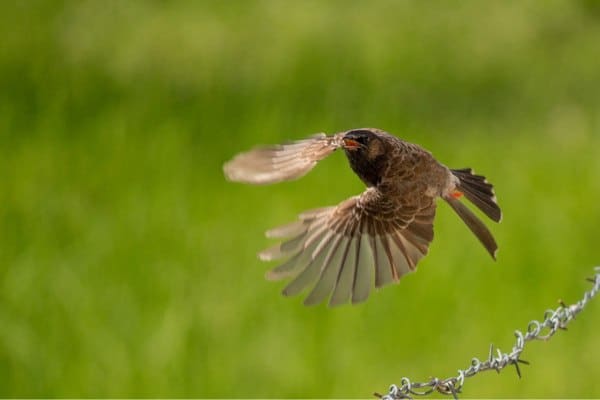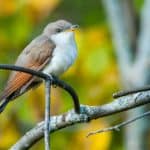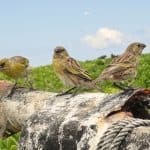Common Name: Red-vented Bulbul
Scientific Name: (Pycnonotus cafer)| Size | Diet | Range in Hawaii | Status in Hawaii |
|---|---|---|---|
| 8 in. - 9 in. | fruits, flowers, nectar, insects, and even small invertebrates | O'ahu, Kaua'i, Moloka'i, Maui, and Hawai'i (Big Island) | Least Concern |
The Red-vented Bulbul, also known as Pycnonotus cafer, is a songbird species that is native to South and Southeast Asia. While the species is not native to Hawaii, it has been recently established and is considered a naturalized (non-native) resident of the islands. With its vibrant appearance and melodic song, the Red-vented Bulbul is a fascinating bird species that has captured the attention of birdwatchers and avian enthusiasts around the world.
In this article, we will explore the world of the Red-vented Bulbul, its unique characteristics, and its presence in Hawaii.
Red-vented Bulbul
Appearance

The Red-vented Bulbul boasts a captivating appearance that instantly captures the eye. With its elegant combination of vibrant colors and distinctive features, this avian beauty stands out in any setting.
Sporting a sleek body around 8 to 9 inches in size, its plumage showcases a contrast between a glossy black head and a cream-colored body. The signature trait, as the name suggests, is the bright crimson patch located beneath its tail feathers, a striking accent that adds a touch of flair to its enchanting profile.
Diet
The Red-vented Bulbul is not just a visual delight but also a fascinating gastronomist. Its dining preferences span a diverse range, making it an adventurous eater. This avian gourmet indulges in a varied diet that includes fruits, flowers, nectar, insects, and even small invertebrates. Additionally, its nectar-sipping habits make it a pollinator in its own right.
Nesting

The nesting habits of the Red-vented Bulbul unveil a captivating story of avian dedication and creativity. These bulbuls construct their nests in a cup-shaped design, weaving together various materials like twigs, leaves, and grasses. Their nesting sites range from dense shrubs to trees, offering protection from predators.
During the breeding season, the male Red-vented Bulbul often participates in the nest-building process alongside the female. Once the nest is complete, the female lays her eggs within, usually numbering between two to four. Both parents share the responsibility of incubating the eggs, showcasing a harmonious partnership in nurturing their offspring.
As the eggs hatch, the parents tirelessly gather food, bringing a diverse range of offerings to the growing chicks, which includes fruits, insects, and nectar. The nest becomes a hub of activity, with the young ones eagerly awaiting the nourishment provided by their diligent parents.
Behavior
The Red-vented Bulbul is not just a feathered spectacle but also a fascinating study of avian behavior. Its spirited demeanor and lively interactions make it a captivating observer’s delight. With an unmistakable and melodious song, this sociable bird often forms chatty groups, engaging in animated conversations that echo through gardens and landscapes.
An agile acrobat, the Red-vented Bulbul displays its playful side as it flits through the foliage with graceful ease, showing off its impressive aerial maneuvers. Curiosity seems to be its guiding principle, as it fearlessly explores flowers for nectar, hunts for insects hidden in leaves, and sometimes even nibbles on fruits.
Furthermore, its sociable nature extends beyond its own kind. It readily interacts with other birds, often engaging in friendly chases or sharing its findings.
Habitat
The Red-vented Bulbul is a versatile inhabitant, thriving in various landscapes. From city gardens to lush forests, this adaptable bird showcases its agility and resourcefulness. Its vibrant presence graces urban and natural realms alike, reminding us of nature’s ability to flourish in diverse habitats.
Range

The Red-vented Bulbul has become a naturalized non-native resident in O’ahu, Hawaii. There have been scattered reports on other Hawaiian islands, including Kaua’i, Moloka’i, Maui, and Hawai’i (Big Island), but its main established range is on O’ahu.
Conservation Status
As of the IUCN assessment, the Red-vented Bulbul (Pycnonotus cafer) is classified as a species of “Least Concern.” This designation reflects its widespread distribution, adaptability to various habitats, and the absence of significant threats that would jeopardize its population.
Interesting Facts
1. Human interaction
Due to their vibrant plumage and melodious calls, Red-vented Bulbuls are popular as caged birds in the pet trade, leading to introductions in new areas through escapes and releases.
2. Cultural symbolism
In some regions of their native range, the Red-vented Bulbul is considered a symbol of good fortune or luck, and its songs are associated with positive omens in local folklore.
3. Invasive potential
While the Red-vented Bulbul has successfully integrated into certain ecosystems, its introduction to new areas raises concerns about potential competition with native bird species for resources and nesting sites.
4. Interspecies behavior
These bulbuls have been observed engaging in “anting,” a behavior where they pick up ants and rub them on their feathers. This is thought to help remove parasites or apply chemicals that repel insects.
5. Mimicry abilities
Red-vented Bulbuls are known to mimic the calls of other bird species, showcasing their vocal versatility and adaptability to different communication scenarios.
Frequently Asked Questions
1. Can the Red-vented Bulbul be kept as a pet?
Yes, due to their vibrant plumage and melodious songs, Red-vented Bulbuls are sometimes kept as cage birds in the pet trade. However, their introduction into new areas through escapes and releases can have ecological implications.
2. What is the lifespan of a Red-vented Bulbul in the wild?
The lifespan of a Red-vented Bulbul in the wild is typically around 6 to 7 years, but it can vary depending on factors such as predation, food availability, and environmental conditions.
3. How does the Red-vented Bulbul communicate with its flock members?
The Red-vented Bulbul communicates with its flock members through a diverse range of vocalizations, including whistles, trills, and chatters, each serving different communication purposes.
4. Are there any interesting behaviors associated with the Red-vented Bulbul’s courtship displays?
During courtship displays, the male Red-vented Bulbul may puff up its feathers, hop around, and present food gifts to the female as part of its mating ritual.
5. Are there any ongoing conservation efforts for the Red-vented Bulbul?
Conservation efforts for the Red-vented Bulbul may vary based on local contexts. Some regions may focus on monitoring its impact on native ecosystems, while others might prioritize habitat preservation.




